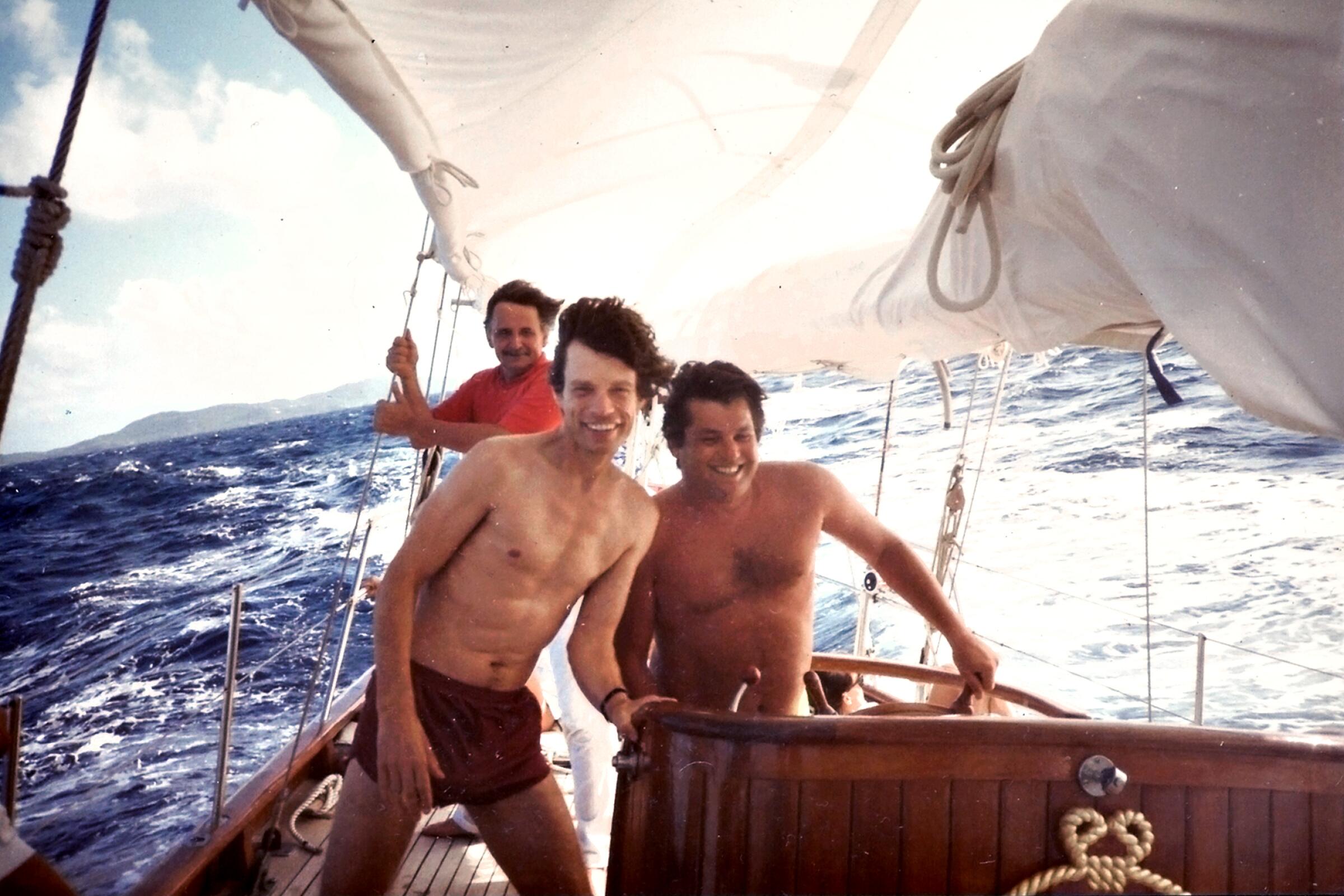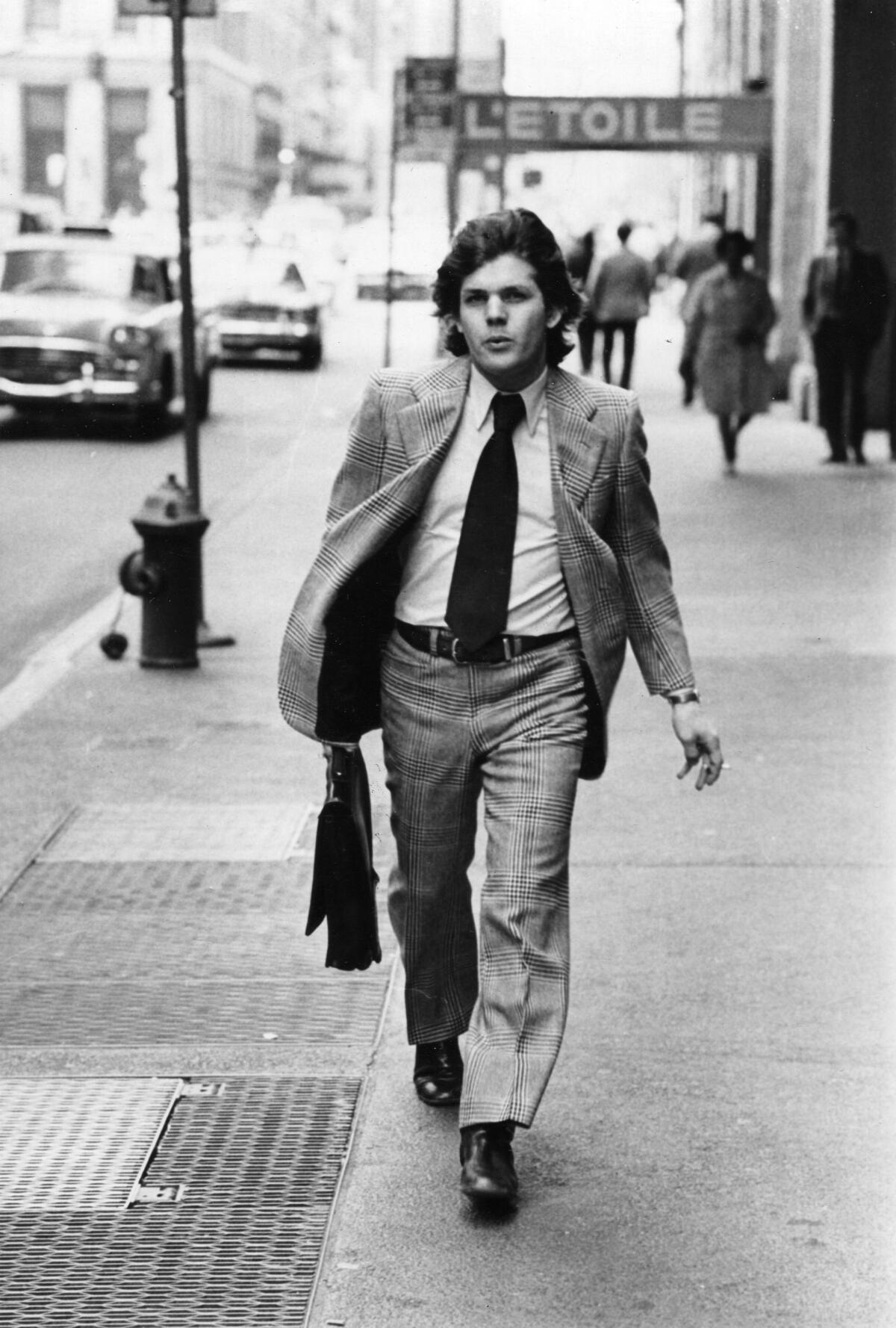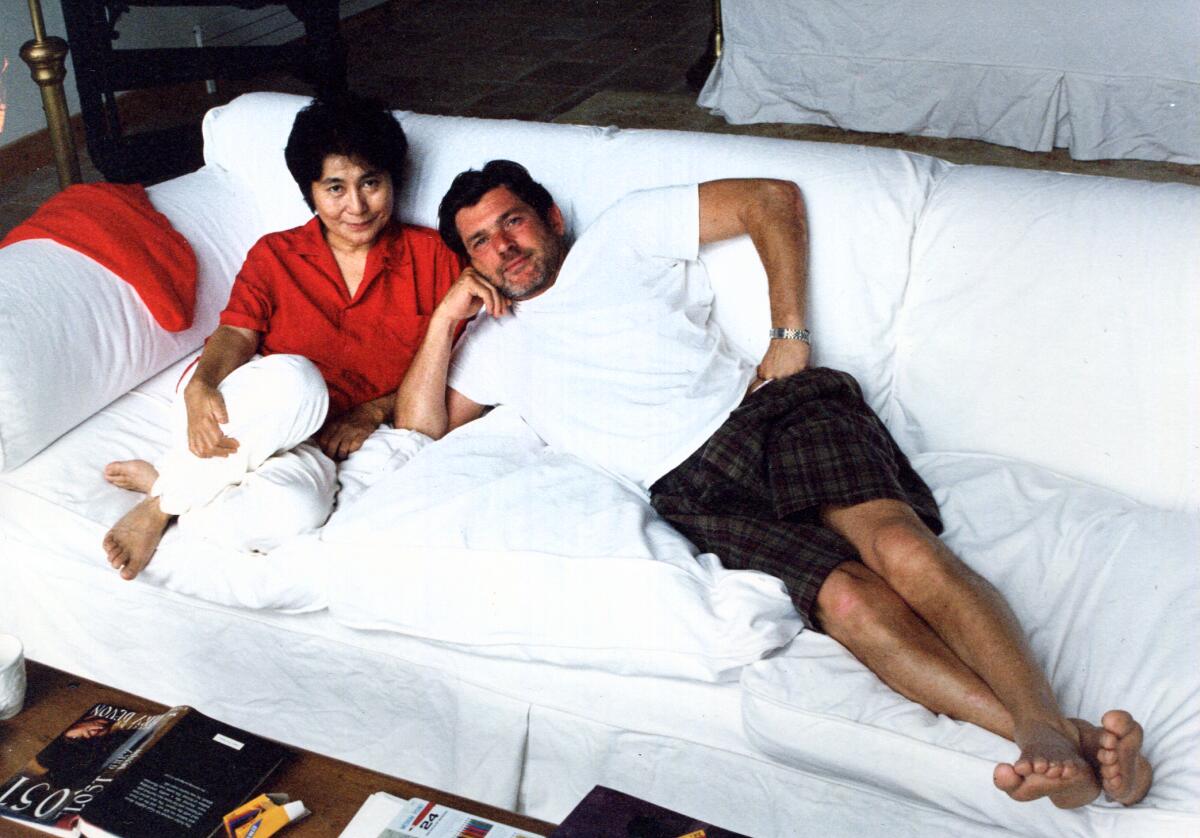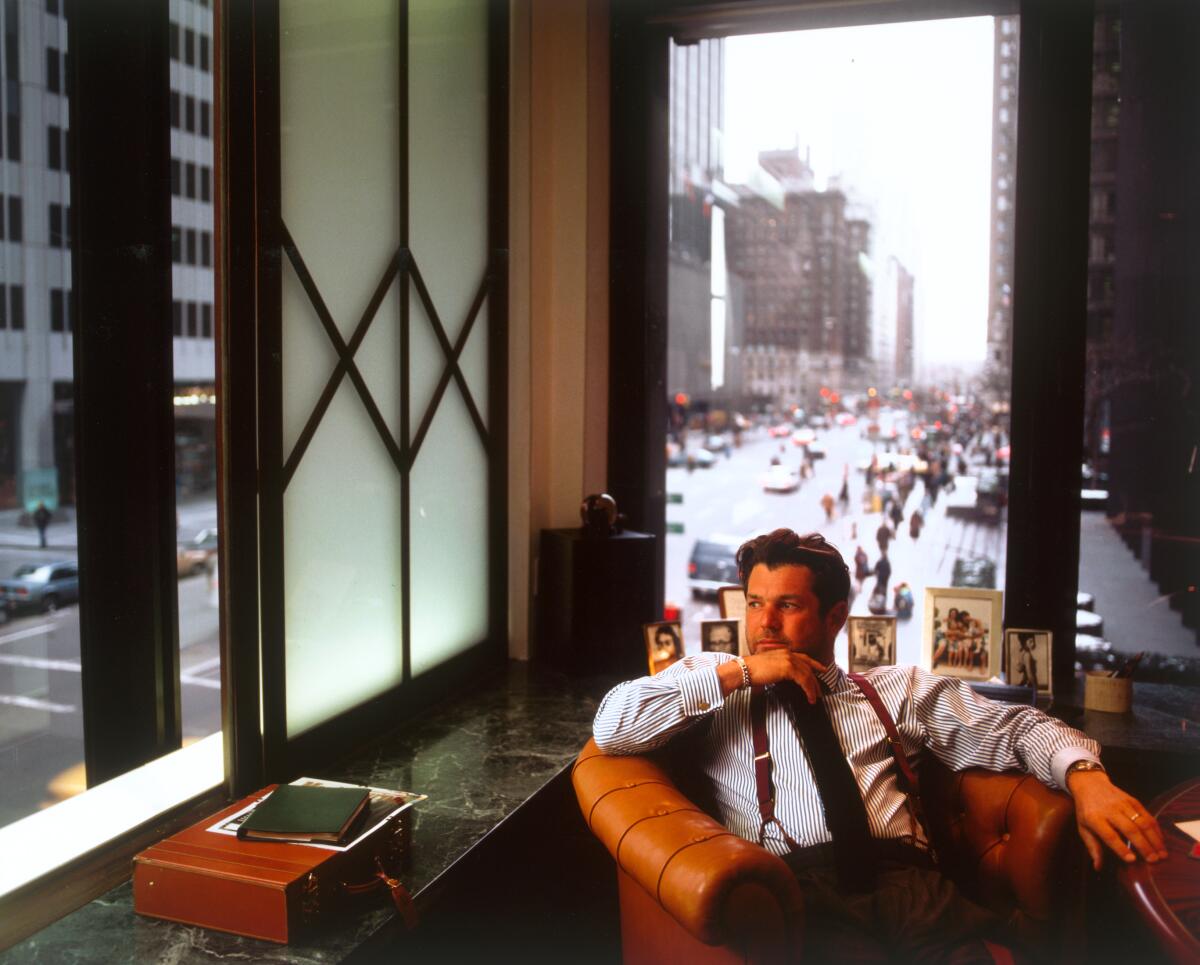Sign up for our Book Club newsletter
Get the latest news, events and more from the Los Angeles Times Book Club, and help us get L.A. reading and talking.
You may occasionally receive promotional content from the Los Angeles Times.

On the Shelf
Like a Rolling Stone: A Memoir
By Jann Wenner
Little, Brown: 592 pages, $35
If you buy books linked on our site, The Times may earn a commission from Bookshop.org, whose fees support independent bookstores.
Some memoirs are deeply introspective; others amount to victory laps sandwiched between covers. Jann Wenner’s “Like a Rolling Stone” falls firmly in the second category. The co-founder and former owner and publisher of Rolling Stone — and still its public face even after a noisy parting of ways —takes stock of his magazine’s place in history and drops a lot of names that are admittedly worth dropping (Bruce! Bob! Bono!).

The book is also a font of gossip, befitting a man who also owned Us Weekly for three decades. Mick Jagger and photographer Annie Leibovitz? He says they definitely got together. Those paparazzi photos of Brad Pitt and Angelina Jolie cavorting in Africa that confirmed their relationship? He claims Jolie was the tipster.
Most of all, Wenner wants you to know that he was on the ground floor of the rock ‘n’ roll revolution. As he explained in a recent video interview with The Times, “The magazine was a big part of the dialogue, of the debate over what we stood for as a generation. We were young people, and just coming of age. So we understood all that.”
He also knew how to harness and package the power of rock and what it came to stand for. From the time he started Rolling Stone in San Francisco in 1967 with his mentor Ralph Gleason, Wenner had a flair for selling the dream. He tabbed Leibovitz, then a raw young photographer, to shoot covers that oozed sexuality. He was friendly — some would say too friendly — with the major record labels that advertised in his pages, companies that helped bail out the magazine during one early crisis. After he asked for advance money against future advertising, he writes, “Gil Friesen, of A&M, with whom I was forming a strong friendship, Clive Davis, and Jac Holzman all came through within days.” Wenner was nothing if not a shrewd businessman.

Today, at 76, he’s a retired businessman, relaxing in the Montauk, N.Y., home he shares with his domestic partner, Matt Nye. (Though he had dalliances with men in the past, he was married to Jane Schindelheim until 1994, when he told her he was leaving her for Nye.) His son Gus is now the CEO of Rolling Stone, which the elder Wenner sold to Penske Media in two chunks: 51% in 2017, the remaining 49 in 2020. He has no creative input into the magazine’s current iteration.
Mick, Keith, Ronnie and Steve Jordan on saying goodbye to Charlie Watts, filling a legend’s drum seat and why it was ‘the right decision to keep going.’
“I don’t miss it,” Wenner says as he orders a wine spritzer from a servant at his Montauk home. “I miss the camaraderie. I miss a little bit of being in the action, but there’s nothing new about it anymore. I mean, I don’t want to read any new articles about how the guitar player met the drummer in high school.”

If you’re thinking, “Hey, wasn’t there just a definitive biography of Wenner?” move to the head of the school of rock. In 2017, Joe Hagan published “Sticky Fingers,” a detailed and not particularly flattering book about how Wenner bought and sold the counterculture. Hagan’s book is both an indictment and a celebration of the boomer generation, with Wenner as its patron saint. The journalist interviewed hundreds of people for the book, including extensive sit-downs with Wenner himself. Though he had provided Hagan full access to his archives, Wenner publicly denounced the book and refused to promote it.
“It was so bad,” Wenner says now. “It was a mistake to have done it, to have picked that guy as a biographer. But he got a lot of money and a lot of access and ended up doing a pretty mediocre job. It just missed the truth of it, missed the central truth of how meaningful it was, how important it all was, how much I was deeply committed to that time, that era and those things.”
Hagan stands by his work. Reached by phone, he says he saw “Sticky Fingers” as a tribute to the magazine Wenner created.
“I’m very proud of my book, and I’m very confident in the story it tells,” Hagan says. “The style and voice were directly inspired by the Rolling Stone that Jann Wenner made. It was an homage to him, and the saddest part of his reaction was that he didn’t see that. It was a massive act of journalism that was meant to tell the story of him and that generation and that magazine. I know it hurt his feelings, but how many people’s feelings did he hurt over the course of 50 years? Was that what mattered or was it the journalism?”

Annie Leibovitz began her creative life like so many other photographers of her generation: with a basic SLR camera and some black-and-white film.
One frequent criticism of Wenner has been that he was too chummy with many of the artists Rolling Stone covered. Indeed, “Like a Rolling Stone” sometimes reads like a boomer greatest hits compilation:
“I liked Bob [Dylan]. I thought that, even with the awkwardness of my awe, we would be able to work together and find a level of friendship that would last.”
“I was in New York to accept a National Magazine Award. … I had lunch with William Shawn, editor of the New Yorker, at his regular table in the Algonquin Hotel.”
“Art Garfunkel moved to San Francisco to make his first solo record and we soon began a weekly tennis game and a gab fest at the post-match juice bar.”
Inside the book is ample photographic evidence — laughing uproariously with Sir Paul; sharing a tiny table with Jackie O.; fishing with Mick; lazing on a couch with Yoko. During our interview, however, Wenner downplays the impact of his friendships.

“As professionals, these are terrific people, making music, making art,” he says. “These are not politicians. These are not people making tobacco. These are people whose life is about joy and poetry and creating art and entertaining people. They don’t deserve that level or kind of scrutiny or investigation. We never shrank from reviewing anybody [in a way] we thought they should be reviewed. Luckily, in most cases, these people make great records, but we always called it like it is.”
In ‘Yoko Ono: An Artful Life,’ Donald Brackett works to correct the record on an influential artist — not just the woman who ‘broke up the Beatles.’
Whether you buy that or not, it’s difficult to begrudge him the trophies on his wall. Before they were books, he published Hunter S. Thompson’s “Fear and Loathing in Las Vegas” and Tom Wolfe’s “Bonfire of the Vanities.” He regularly showcased the photography of Leibovitz and Richard Avedon. He helped launch the careers of such storied music journalists as Greil Marcus, Jon Landau and Ben Fong-Torres. Rolling Stone was for many years at the center of the cultural conversation, and Wenner was at the center of Rolling Stone.
He’s not about to apologize for his life’s work.
“We interviewed every significant artist of our time in a serious, deep manner,” he says. “We treated their work as important work, and we promoted that work and proselytized for that work. We created a place where people could gather, and where the work could be supported and made into a coherent piece.
“What a proud legacy that is.”
The nature of that legacy might remain in contention, but one thing all parties can agree on is that it is now firmly in the past.
Penske Media Corp. said it has made a strategic investment in Wenner Media, the owner of Rolling Stone, the iconic pop culture and music magazine founded a half-century ago.
Vognar is a freelance writer based in Houston.
Sign up for our Book Club newsletter
Get the latest news, events and more from the Los Angeles Times Book Club, and help us get L.A. reading and talking.
You may occasionally receive promotional content from the Los Angeles Times.